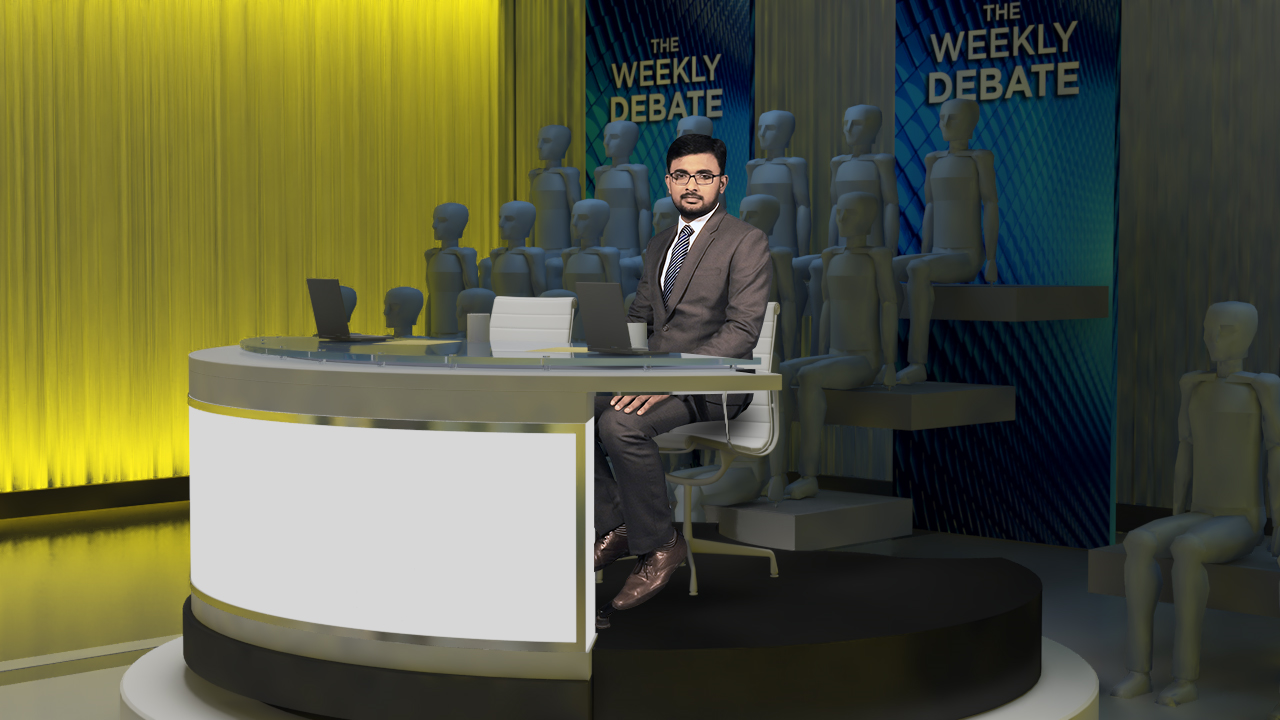The design approach was to break the set down to the lowest possible elements to form infrastructure that facilitates various combinations of these elements. This image shows an 86-inch vertical display screen on wheels, which is part of a set of 16, connected to a platform.
In Formation A, 8 vertical display screens form a curved video wall behind the anchor desk. A curved platform that is vertically split in 2 acts as the visual base.


Formation B with monitors arranged in sets of twos, allows for a standing anchor or guest to make an entry into the studio. Example in the image below.
Formation C can be useful for explaining timelines or series of events with each display panel representing a milestone.
The physical arrangement of the screens helps to break the story down to parts while also encouraging the anchor to move around to make the presentation more dynamic.
This formation is suitable for anchor (standing) with experts (seated) and guests (not shown here). It gives the anchor flexibility to mingle with the audience and also walk over to get close to the experts.
Formation for panel discussion
View from the audience stands


Formation with single guest for a town hall meeting concept
Video wall split into sets of 4. Formation for big shows where the whole studio is utilised. Shot possibilities below.
A curved corner for a virtual set or augmented reality is integrated with the studio.
